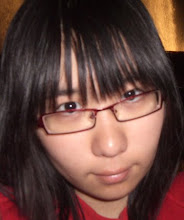Korean letter, Hanguel 한글, was invented in 1446 by King Sejong. (It was named Hunminjeong'eum훈민정음 at that time, which means "sincere letters educating the people") Since then it has been revised and renovated till now.
Here are some major characteristics of Korean.
- Korean's rich in vocabularies. According to Standard Korean Encyclopedia published in 1999, there're 508,771 letters in total. What's unique in Korean is that Korean's very rich in words for colors, onomatopoeias(words for sounds), and mimetic words(words for behaviors). For example I can name at least seven words for red, blue, and yellow. And there's surely many words for sounds and behaviors, and it's so cute to read them in Manhwa(Korean comics)
- Korean language flows. It's pretty much like English, there's lots of flows and assimilations that helps you speak smoothly.
- I you love. That's how you say "I love you" in Korean. Not like English, you say objective first than the verb. That's why some people say you should listen to what they say till the end.
- Korean is an agglutinative language(glue language). In English there's a basic form of verbs, like see, write, or go. And to say something that happened in the past, it goes saw, wrote, and went. In Korean there's a major body of the verbs, like bo보, sseu쓰, ga가, and to make the past tense you add atda았다, which goes boatda보았다, ssetda썼다, gatda갔다. You basically "glue" the words you need to get the form of verb you want. Japanese works the same way.
- Korean's a easy language to learn. (At least that's what English Institute announced. It said English's hard language to learn, though. I don't know why!)

No comments:
Post a Comment